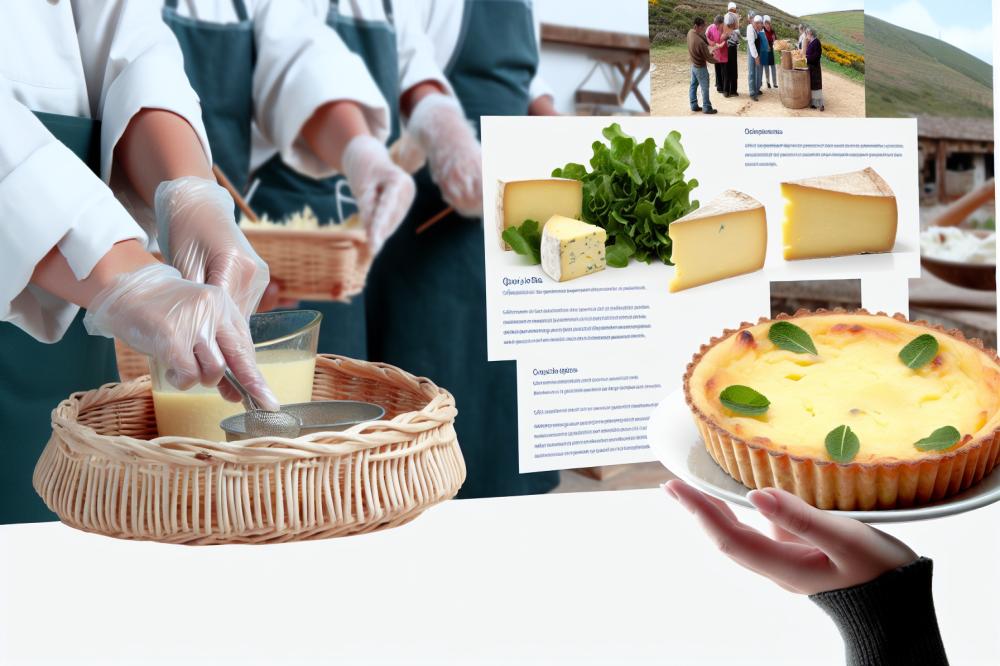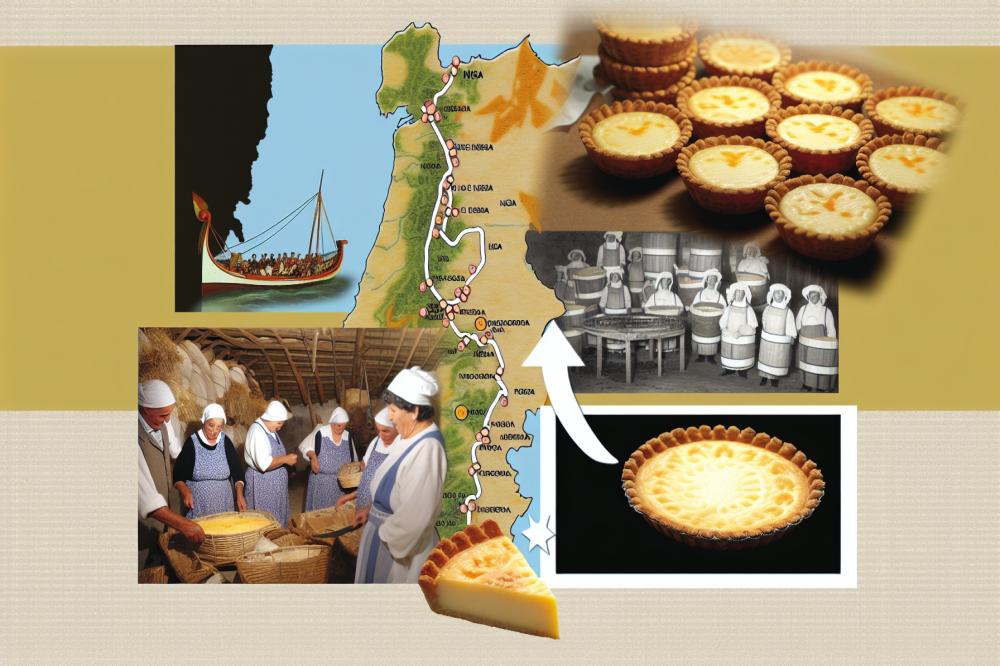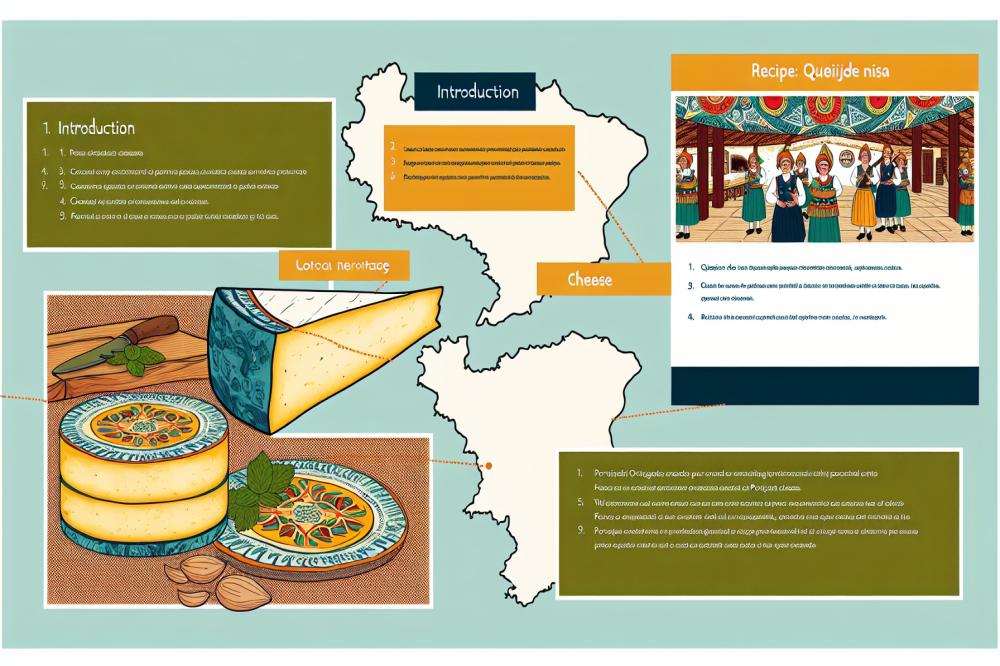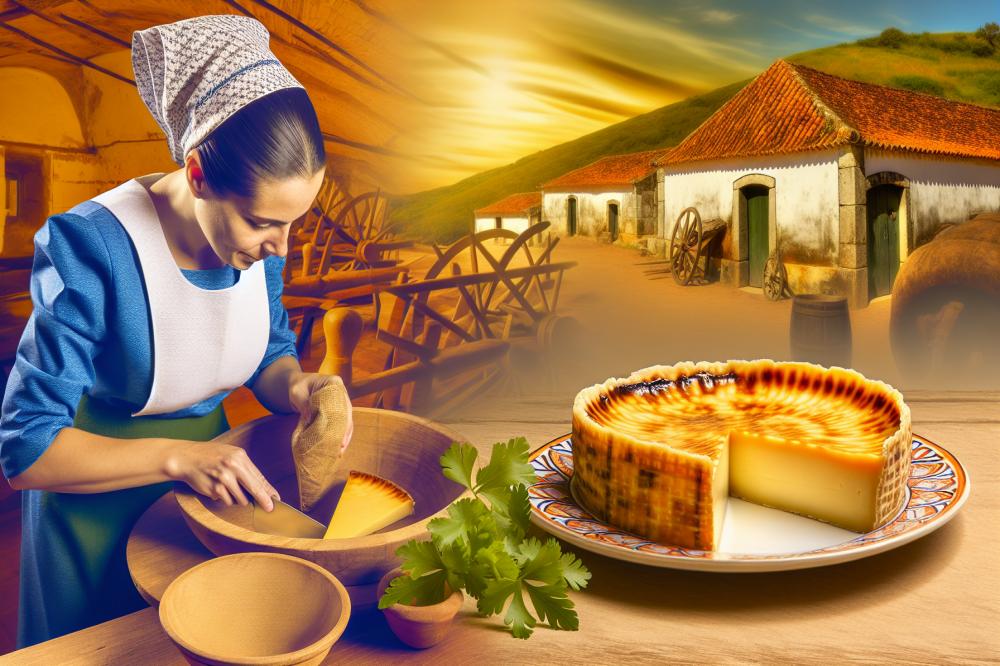Introduction
Queijo de Nisa is more than just a cheese; it is a rich part of Portuguese heritage. This artisanal product hails from the Alentejo region, where the traditional methods of production have been preserved through generations. Its history is intertwined with the culture and identity of the people who create it. In local markets and kitchens, one often hears about its deep-rooted significance.
This cheese stands out for its creamy texture and distinct flavor, which come from the milk of local sheep. The unique process involved in making it includes natural fermentation and careful aging. Such practices are crucial in producing this beloved cheese. The result is a product that many say represents the essence of Alentejo. It accompanies many regional dishes and plays a vital role in traditional meals.
Beyond its culinary uses, Queijo de Nisa serves as a symbol of local pride. Communities celebrate it in festivals, showcasing their commitment to maintaining traditional cheese-making techniques. Chefs and home cooks alike cherish this cheese, incorporating it into everyday recipes. Dishes featuring it often evoke nostalgia and connect people with their roots.
In Portugal, this cheese highlights the importance of regional products. It emphasizes sustainability and a connection to the land. The stories that accompany it tell of hard work and dedication. As more people become aware of this cheese, its recognition grows, showcasing the vibrant culinary traditions of Portugal.
Queijo de Nisa

Queijo de Nisa is a traditional Portuguese cheese that boasts a rich history and a strong connection to its region. Typically made from sheep’s milk, this cheese features a semi-soft texture and a pale yellow hue. Handcrafted by local artisans, it reveals the skill and care that go into its production. Its flavor profile is complex, combining savory notes with a hint of tanginess that appeals to many palates.
This cheese originates from the Alentejo region, specifically around the town of Nisa. This area is known for its rolling hills and rich pastures, which provide an ideal environment for sheep grazing. Local shepherds have been making this cheese for generations, passing down their knowledge and techniques through families.
The production process involves several steps, starting with the collection of high-quality milk. Artisans carefully curdle the milk using natural rennet. After it thickens, the curds are cut and drained. The mixture is then shaped into wheels, which are salted to enhance flavor. Once shaped, each wheel is left to mature for at least 30 days. The aging process allows the cheese to develop its distinctive taste.
Traditional methods are essential to producing this renowned cheese. Craftsmen often use wooden molds and cloths made from natural fibers, harkening back to old-world practices. The maturation occurs in cool, dark cellars that help preserve the cheese’s moisture and flavor. This dedication to craftsmanship sets Queijo de Nisa apart from mass-produced varieties.
Besides its delightful taste, this cheese holds a special place in Portugal’s cultural landscape. It is often enjoyed during family gatherings and local festivals. Chefs in the region include it in various dishes, highlighting its versatility. Its strong roots in Nisa’s agricultural community make it a cherished symbol of Portuguese heritage.
Portuguese Heritage

Queijo de Nisa represents much more than just a cheese. It is a part of Portugal’s rich cultural tapestry. Generations have crafted this cheese using traditional recipes passed down through families. The result is a product deeply rooted in the heritage of the Nisa region. This cheese is made from raw sheep’s milk, which adds to its distinct flavor and character.
Local festivals widely celebrate this cheese. Each year, towns host events that showcase its importance. These festivals draw people from various regions. Visitors come to taste, learn, and immerse themselves in the local culture. Music, dance, and crafts accompany the cheese tasting. This blend of activities highlights how the community cherishes its traditions.
The influence of Queijo de Nisa extends to national identity as well. It has become a symbol of pride for many Portuguese people. When people think of their heritage, artisanal cheese often comes to mind. This connection strengthens cultural ties among communities. Families gather over shared meals, enjoying the cheese while recounting stories. Such experiences reinforce bonds and shared histories.
Moreover, cheese-making impacts local economies significantly. Many small farms depend on this traditional craft for their livelihood. By preserving these methods, families sustain their way of life. It is not just about making cheese; it is also about preserving traditions. Tourists visit for authentic experiences, boosting local businesses. This support helps maintain the unique character of the region.
Community involvement is crucial. Many locals participate in the cheese production, strengthening social connections. In doing so, they pass on skills to younger generations. Such mentorship ensures that knowledge of traditional methods is not lost. A focus on sustainability and quality becomes evident in this process. Everyone has a role in keeping these traditions alive.
In learning about Queijo de Nisa, one uncovers a deeper narrative. This cheese symbolizes perseverance, community spirit, and cultural pride. It connects people to their past while looking towards the future. As new generations grow, they carry forward the stories and flavors that define their heritage. Celebrating cheese is, ultimately, a celebration of life and culture.
Recipe: Queijo de Nisa Tart

Creating a Queijo de Nisa tart is a delightful way to enjoy this cherished cheese. Below is a simple recipe that captures its rich flavors. Gather the following ingredients to get started:
Ingredients List
- 250g Queijo de Nisa, crumbled
- 200g puff pastry
- 2 eggs
- 100ml cream
- Salt and pepper to taste
- Fresh herbs for garnish
Recipe Instructions
- Preheat the oven to 180 degrees Celsius.
- Roll out the puff pastry and line a tart pan.
- In a bowl, whisk the eggs, cream, salt, and pepper together.
- Spread the crumbled cheese evenly over the pastry.
- Pour the egg mixture over the cheese carefully.
- Bake for 30-35 minutes or until the top is golden brown.
- Let it cool slightly before serving to enhance the flavors.
- Garnish with fresh herbs for a touch of color and aroma.
Nutritional Information and Benefits
This cheese offers several health benefits. High in protein, it supports muscle maintenance. Calcium is another key nutrient provided, essential for strong bones and teeth. Integrating cheese into meals can help contribute to a balanced diet. This tart not only satisfies hunger but also honors a significant part of Portuguese culture. Enjoying traditional dishes like this one can enrich your appreciation of heritage. Remember, each bite is a taste of history.
Embracing Heritage Through Flavor

Queijo de Nisa stands as a powerful symbol of Portugal’s rich cultural heritage. This traditional cheese represents not just local flavors but also the stories and customs of past generations. It showcases the skills of local artisans who have perfected their craft through years of dedication. They blend a time-honored process with modern techniques, ensuring a product that respects the old while embracing the new.
Balance is key in the production of this beloved delicacy. From the careful selection of ingredients to the fermentation process, each step reveals a deep respect for tradition. Yet, today’s cheese makers also innovate, adapting to modern tastes without losing the essence that makes their creation special. Visitors to the region can witness firsthand how these producers honor their roots while also appealing to a wider audience.
Experiencing this artisan cheese offers an opportunity to connect with Portugal’s past. Each bite tells a tale, a reflection of the land and its people. Tourists and locals alike are encouraged to immerse themselves in the flavors. This journey not only delights the palate but also enriches the understanding of what it means to be part of Portuguese culture.
In summary, the significance of Queijo de Nisa goes beyond simply being a food item. It is a representation of heritage, tradition, and community. As you explore this exceptional cheese, remember that you are not just tasting a product; you are savoring a piece of history. Embrace this culinary treasure and discover the full essence of what it means to enjoy Portuguese flavors.



